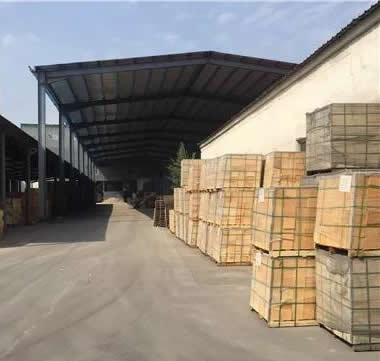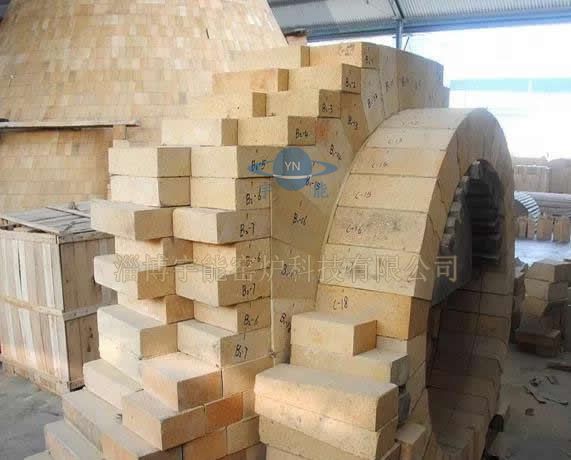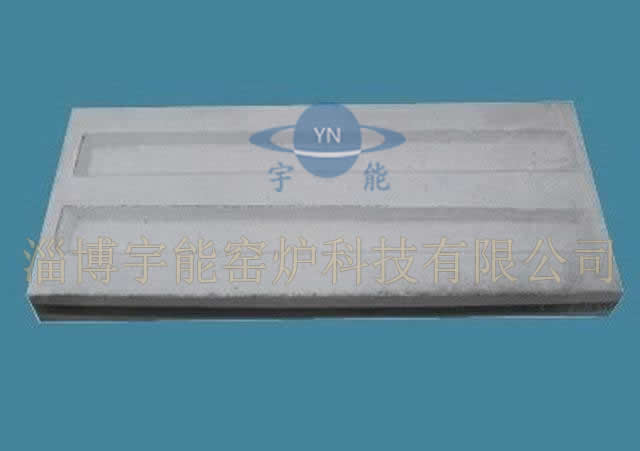Zibo Yunneng Kiln Technology Co. Ltd. Zibo Yunneng Kiln Technology Co. Ltd.
Free delivery samples
high quality assurance
Engineer's door-to-door guidance
lifelong technical support
Contact us+86159669653330086-533-5331887
Zibo Yunneng Kiln Technology Co. Ltd. Zibo Yunneng Kiln Technology Co. Ltd.
Free delivery samples
high quality assurance
Engineer's door-to-door guidance
lifelong technical support
Contact us+86159669653330086-533-5331887
Home -> News -> News -> Industry News ->
1. Brick layout
After the temperature rises, the kiln body and the fire brick of the cement rotary kiln will expand. However, the thermal expansion coefficients of the steel plate and the fire brick are different, and the temperature of each part of the fire brick is not the same, which causes a difference in expansion. The difference in expansion can create voids that cause the bricks to loosen; stress can also be generated, causing the bricks to collapse. If there is no tightness between the bricks, a lottery or brick-breaking accident will occur. If the bricks are too tight and the squeezing force exceeds the strength of the bricks, the kiln lining will be destroyed. Therefore, if you don't draw lots, don't drop bricks, or if you don't crush bricks, you should study the problem of retaining expansion joints. In the rotary kiln, the expansion of the refractory bricks is mainly to solve the problem of the radial joints and axial joints of different refractory materials.

2. Expansion difference
The metal material and the refractory material have different expansion coefficients, and the hot end and the cold end of the refractory material have different temperatures.
From the cold end of the brick, the thermal expansion of the clay brick and the high aluminum brick is lower than that of the kiln; the thermal expansion of the alkaline brick is equivalent to that of the kiln. In comparison with the hot and cold end, when the temperature difference between the head and the head is 1000 °C, the relative expansion of the alkaline brick is as high as 1.2%, and the relative expansion of the high alumina brick is only 0.75%. Therefore, clay bricks and high-alumina bricks are more prone to lottery and brick-breaking accidents; the hot end of alkaline bricks is more likely to be crushed. Therefore, in order to prevent lottery and bricks, clay bricks and high-aluminum bricks are often used for masonry. In order to prevent the hot end from being crushed, the alkaline brick is usually dry-laid.
If the expansion of the kiln shell is in the hot state, the expansion of the hot end of the lining is S heat, the expansion of the cold end is S cold, and the retention of the Sa>S^ expansion joint is determined by the following formula.
△S = S heat - S shell (2)
Where △S——the difference in the expansion of the hot end of the kiln lining relative to the kiln.
For alkaline bricks, when the temperature difference between the head and the head is l000 °C, the expansion of the cold end is consistent with that of the kiln, and the hot end has a relative expansion of 1.2% to the cold end. Therefore, it must be compensated by the expansion joint. For high-aluminum bricks, when the temperature difference between the head and the head is 1000 °C and the temperature of the small head is 200 °C, the cold end has a shrinkage of 0.1% to the kiln and a hot end of 0.7%. Due to the shrinkage of the cold end, there is a gap between the brick and the kiln, and the relative expansion of the hot end is only 0.6%. Once the hot end of the refractory brick is heated and contracted, a lottery may occur. Therefore, it is generally not necessary to leave an expansion joint in the aluminum-silicon refractory brick lining in the kiln, and to lay the kiln lining. Only a certain expansion joint is left in the aluminum silice monolithic refractory material.
3. Curvature diameter
According to the geometrical conditions shown in the dimensional drawing of the refractory brick for the rotary kiln, the curvature diameter D of the refractory brick and the large size l2 of the refractory brick shown on the way, the small head size l1 of the refractory brick, and the height h of the refractory brick satisfy the following relationship.
If a brick kiln is used, when the curvature diameter of the brick is larger than the curvature diameter of the kiln, the small head of the brick after the kiln is squeezed, and the big head will be in a relaxed state. During the warming up, the small head of the brick is strongly squeezed. In use, after the small head is worn out, if the rest of the brick cannot be tightened, a lottery or brick-breaking accident will occur. When the curvature diameter of the brick is smaller than the curvature diameter of the kiln, the large head of the brick after the kiln is in a state of being squeezed, and the small head is in a loose state. During the warming up, the small head of the brick has a certain space reserved for the expansion of the hot end. After use, the big head can be squeezed after the small head of the brick is worn out. From the above, the ideal state is that the big head is tight and the small head is moderately relaxed. However, in order to prevent "climbing", it is necessary to apply a thin steel strip or a smear to the small head of the brick.
If you use two kinds of brick kiln, choose a few bricks with small curvature diameter, and choose some bricks with large curvature diameter. You can also use the small head gasket steel or smear in the brick to leave the expansion joint. Squeeze, small heads and seams." After leaving the seam, be sure to hit the steel plate to lock the lining brick and prevent the brick from falling off.
4. Expansion joint expansion
When dry alkaline bricks are used, the radial joint is set to 1% of the length of the kiln, that is, a cardboard having a thickness of 2 mm at each end of each 200 mm long brick; the axial slit is set to be about 0.1 mm per brick. In order to prevent bricks from falling off, the cement kiln above 5000t/d may not have axial seams. Setting method: Make a steel plate with a thickness of 1mm, a length and a width smaller than the large surface of the brick, and the amount is about 1/10 of the brick. After being heated, the steel plate is deformed after being pressed, and can absorb the thermal expansion of the brick. However, the oxidation of the steel sheet will cause expansion, and it is not appropriate to use the steel plate.
It can be seen from the above that the compensation effect of the radial lining of the brick lining is strong; however, the compensation effect of the axial sipe is weak. Therefore, some refractory companies have developed “flexible” (low modulus of elasticity) alkaline refractories and achieved certain results. )

Relevant Product Display
 SL series light insulation castable
SL series light insulation castable
 Explosion-proof castable | fiber castable
Explosion-proof castable | fiber castable
 Silicon carbide
Silicon carbide
 High aluminum and high strength castable G-16
High aluminum and high strength castable G-16
Relevant information
Hotline